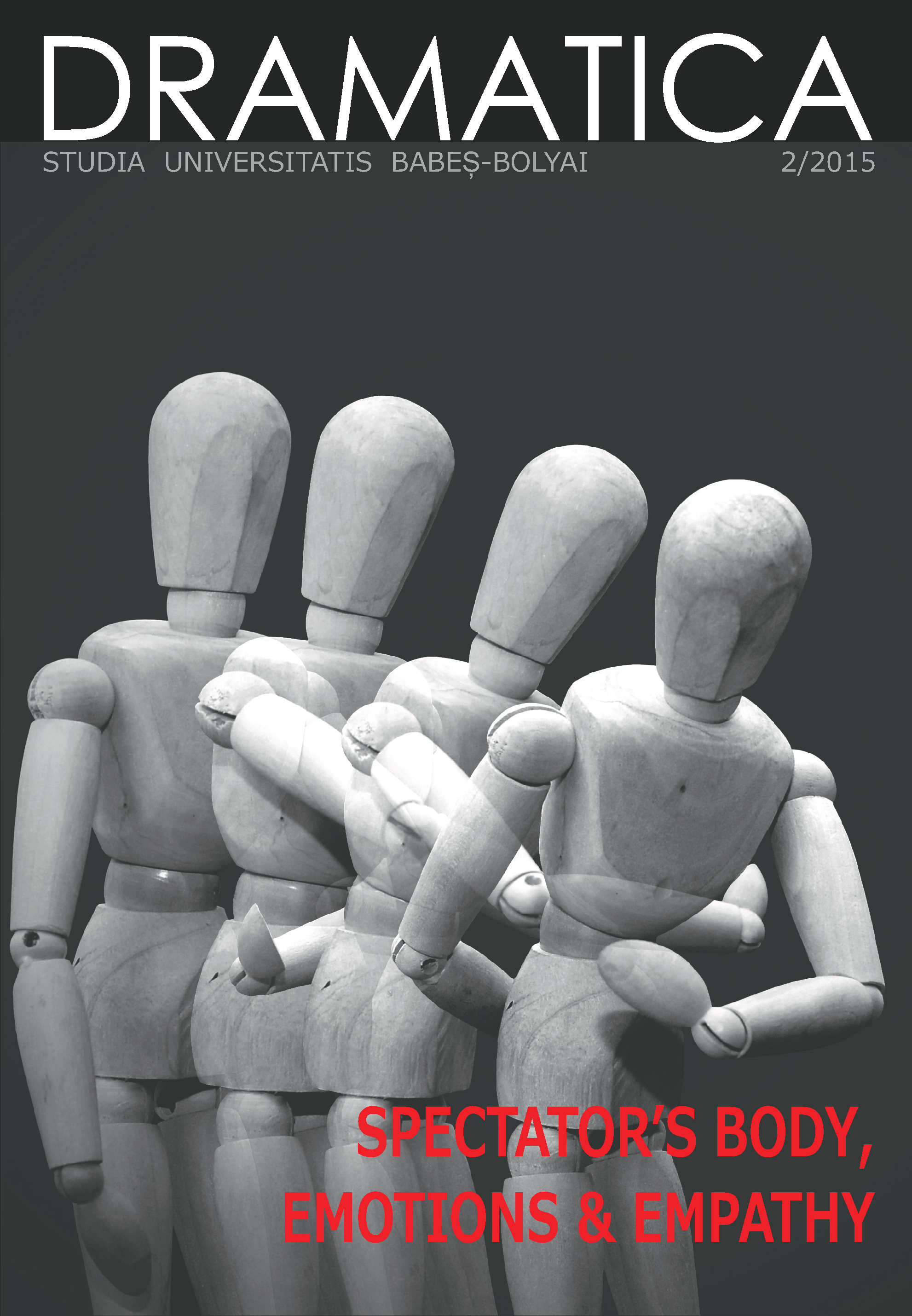Spectators or Participants? A Major Creative Shift in Performing Arts or a Change of Status? (Remarks on a Process)
Keywords:
spectator, theatre, performance, perspective, identification, representation, consubstantiality, digital cultureAbstract
This article is a reflection of my research on the Anatomic Theatre. I question the theatre performance in the digital culture that makes out of this specific artistic procedure - to place the viewer as a Witness or as a Participant - one of the accommodating narratives of the theatre. Theatre direction is thus a μεταφορά (“transport” in Gr.), a theoretical vehicle that would result in a practice where viewers’ position towards performance is disputed between being Spectator or Participant.References
NĀṬYAŚĀSTRA, translated from Sanskrite and edited by Amita Bhose, Constantin Făgețan, București: Editura Științifică, Bibliotheca Orientalis, 1997, Print
BLAKESLEY, David. “Chapter Five: Defining Film Rhetoric: The Case of Hitchcock's Vertigo,” in Defining Visual Rhetorics, ed. Charles A. Hill and Marguerite Helmers (Mahwah, NJ: Lawrence Erlbaum Associates, 2004), 124, http://www.questia.com/ read/104638134/defining-visual-rhetorics (accessed august 2, 2015)
BURKE, Kenneth. A Rhetoric of Motives, Berkely/Los Angeles/London: University of California Press, 1969 (orig.ed. 1950), Print
CASSIRER, Ernest. Philosophie der Symbolischen Formen, I, Berlin: “Die Sprache”, 1923 (quoted in Damisch)
DAMISCH, Hubert. L’origine de la perspective, Paris: Flammarion, 1993
De CERTEAU. Michel. L’invention du quotidien. 1. Arts de faire, Paris: Gallimard/Folio, 1990, Print
LEY, Graham. “Aristotle's Poetics, Bharatamuni's Natyasastra, and Zeami's Treatises: Theory as Discourse,” Asian Theatre Journal 17, no. 2 (2000), © 2008 University of Hawaii Press. © 2000 Gale Group. http://www.questia.com/read/1G1-68872769/aristotle-s-poetics-bharatamuni-s- (accessed august 2, 2015)
WADE, Nicholas J. and SWANSTON Michael T. Visual Perception: An Introduction, 2nd ed. (London: Psychology Press, 2001), 243 http://www.questia.com/read/108802985/visual-perception-an-introduction.natyasastra-and (accessed august 1, 2015)
Downloads
Published
How to Cite
Issue
Section
License
Copyright (c) 2015 Studia Universitatis Babeș-Bolyai Dramatica

This work is licensed under a Creative Commons Attribution-NonCommercial-NoDerivatives 4.0 International License.


